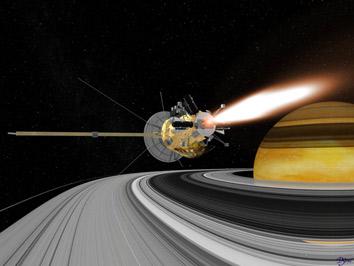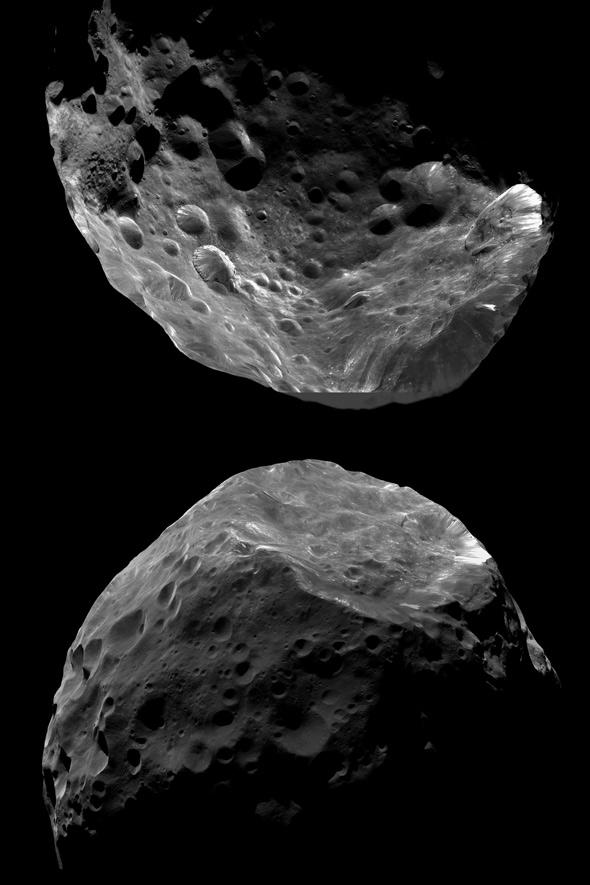Ten years ago this week, the Cassini spacecraft entered the Saturn system. It had traveled for more than six and a half years, and covered several billion kilometers, including passing by Venus twice, as well as Earth and Jupiter to gain the energy needed to get to Saturn.
It descended on Saturn at high speed, and as it approached it passed very close to the moon Phoebe, which had never been well-observed before. Orbiting 13 million kilometers out from the planet, Phoebe would be well out of reach once Cassini settled into its planned orbit much closer in to Saturn, so the mission planners purposely put the spacecraft on a path that would take advantage of this literally one-time chance.
The result was the image above. On top is the side of Phoebe Cassini saw on approach, and below is what it saw as it passed. The top image was released years ago but has been reprocessed, and most of the bottom image is newly released. You can see the surface is heavily cratered, indicating it’s old and has been battered a lot over time.
Phoebe is weird. It’s about 220 kilometers (130 miles) wide, roughly spherical, and very dark (indicating the surface isn’t ice). It also orbits Saturn retrograde, the opposite sense of most of the other moons and Saturn itself (if you look down on Saturn over its north pole, prograde is counterclockwise, and retrograde is clockwise). This means it probably didn’t form with Saturn and its moon, and instead is a captured object.
Not only that, it’s clear that there is ice under its surface, so it’s not all rock. Its density is about 1.6 grams per cubic centimeter, which is more than that of ice but far less than rock, indicating it’s a mix of both. Given that, plus how dark and big it is, Phoebe is likely to be a renegade from the Kuiper Belt, the region outside Neptune’s orbit where giant rock and ice balls orbit. We know of more than a thousand such objects, and it’s likely that Neptune’s moon Triton is also an example of a captured KBO.

Art by NASA/JPL/Caltech/David Seal
If so, these are the best images ever taken of such an object … at least until New Horizons reaches Pluto next year.
Cassini passed Phoebe on June 11, 2004. On July 1, nearly three weeks later, it successfully made the orbital insertion burn and became the first human-made moon of Saturn. It was a major achievement, a testament for all humanity to what we can do when we reach for the sky. In the ensuing decade it has taken thousands of images, made incredible observations, and broadened our understanding of Saturn, its moons, and its rings almost beyond measure.
